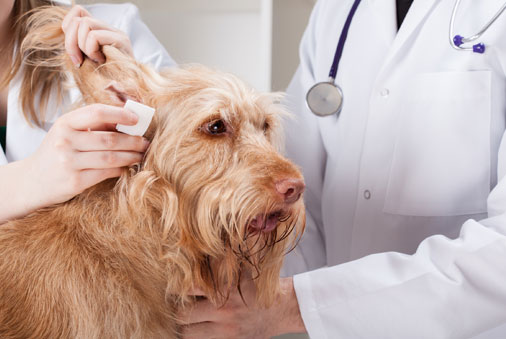10 Pet Cancer Warning Signs
Cancer is a disease in which abnormal cells divide without control and can invade nearby tissues and spread to other parts of the body. As with humans, any cells in your pet's body can be affected, including skin, bone, muscle, liver, lung, spleen, intestinal tract, and nervous system cells. Aging itself makes bodies more vulnerable to cellular changes that can challenge immunity and lead to cancer, but advancements in pet nutrition, vaccinations, routine veterinarian checkups and parasite prevention can help our pets live longer.
Looking for early warning signs is a great way to help prevent or treat pet cancer because it enables you to catch it as soon as possible. And, thanks to all of the advancements in treatments and care, pet cancer is no longer a death sentence.
What Are the Early Warning Signs of Pet Cancer?
Pet cancer is understandably a major concern for pet parents. The earlier the cancer is detected, the quicker it can be treated, so watch for these signs and symptoms in your dog or cat. See Dr. Gerald S. Post’s Video.
Enlarging or Changing Lumps
Pet parents should first check for lumps on their pet and over time note if there’s any change in size, shape or consistency. A lump that grows rapidly or changes its texture or shape should be evaluated. Biopsies, abdominal ultrasounds, x-rays and screening tests can help the veterinarian and oncologist determine whether the lump is cancerous or benign.
Swollen Lymph Nodes
Lymph nodes are located throughout your pet’s body, but the ones behind the jaw or knees are the easiest to check. Enlarged lymph nodes may indicate a common form of cancer known as lymphoma. A biopsy or cytology of any enlarged nodes can help determine the diagnosis.
Abdominal Distension
If your pet’s belly or stomach area rapidly enlarges, it could indicate a mass, tumor or internal abdominal bleeding. Abdominal radiographs or ultrasounds can help determine the cause.
Chronic Weight Loss
If your dog or cat loses weight without a change in diet, schedule an appointment with your veterinarian. Weight loss is not a diagnostic sign of cancer, but it can indicate something is wrong.
Chronic Vomiting or Diarrhea
If your pet has severe or persistent vomiting or diarrhea, see your veterinarian as soon as possible. Gastrointestinal tract tumors can cause chronic vomiting and/or diarrhea, so radiographs, ultrasound examinations and endoscopy are all useful tools to rule out cancer.
Unexplained Bleeding
Bleeding from the mouth, gums or any of your pet’s orifices that’s not related to physical trauma should be checked. Bleeding disorders can occur in dogs and cats, but if a pet has unexplained bleeding, your veterinarian should do a thorough examination.
Cough
Chest radiographs may be indicated.
Lameness
Unexplained lameness is a common sign of bone cancer, especially in large or giant breed dogs. Radiographs of the affected area can help detect this type of cancer.
Straining to Urinate
Straining to urinate and blood in the urine usually indicate common urinary tract infections or inflammatory disease. If these symptoms aren’t quickly controlled with antibiotics or reoccur frequently, bladder cancer may be a possibility. Veterinarians can biopsy your pet’s bladder to establish a diagnosis.
Oral Odor
If your dog or cat seems to be chewing differently, or changes preference from hard food to soft, it could be an oral tumor. Another sign is foul breath. Your veterinarian can do a thorough oral examination with radiographs.
What Can I Do to Help My Pet?
Feeding nutritionally balanced dog food or cat food, and keeping pets as active and fit as possible is crucial whether your pet has cancer or not. If your dog or cat is diagnosed with cancer, take heart. Dog and cat cancer patients now benefit from improved longevity and quality of life, so you can continue enjoying your special bond together.
To learn more about pet cancer treatments, resources and questions to ask your veterinarian, check out the American Animal Hospital Association’s guidelines for pet parents. Plus, find more valuable information at the Animal Cancer Foundation.
Help Us Fight Pet Cancer
See how Blue Buffalo™ and its partners are researching ways to help treat and cure pet cancer. Learn More







